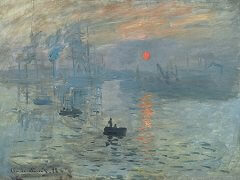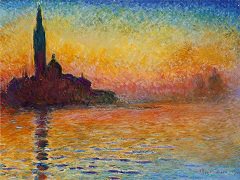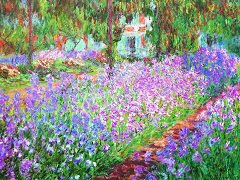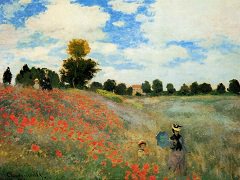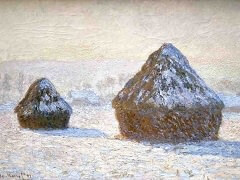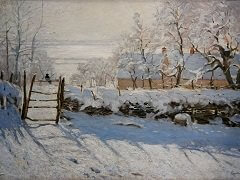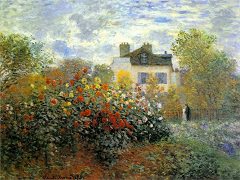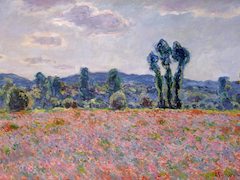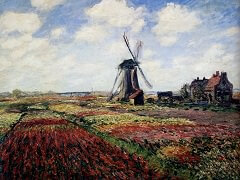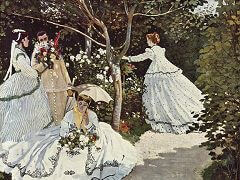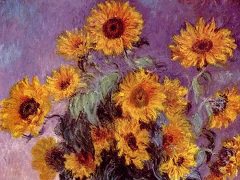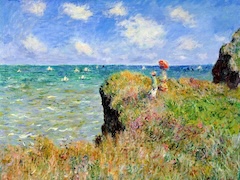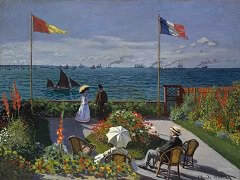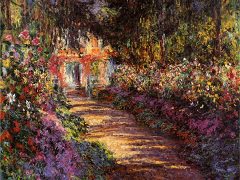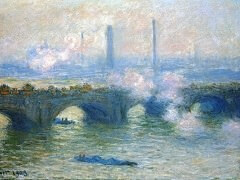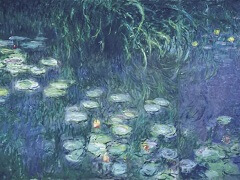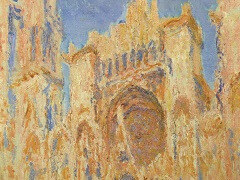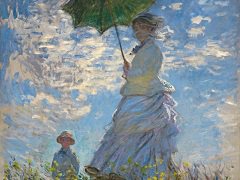The Dolceacqua Chateau, 1884 by Claude Monet
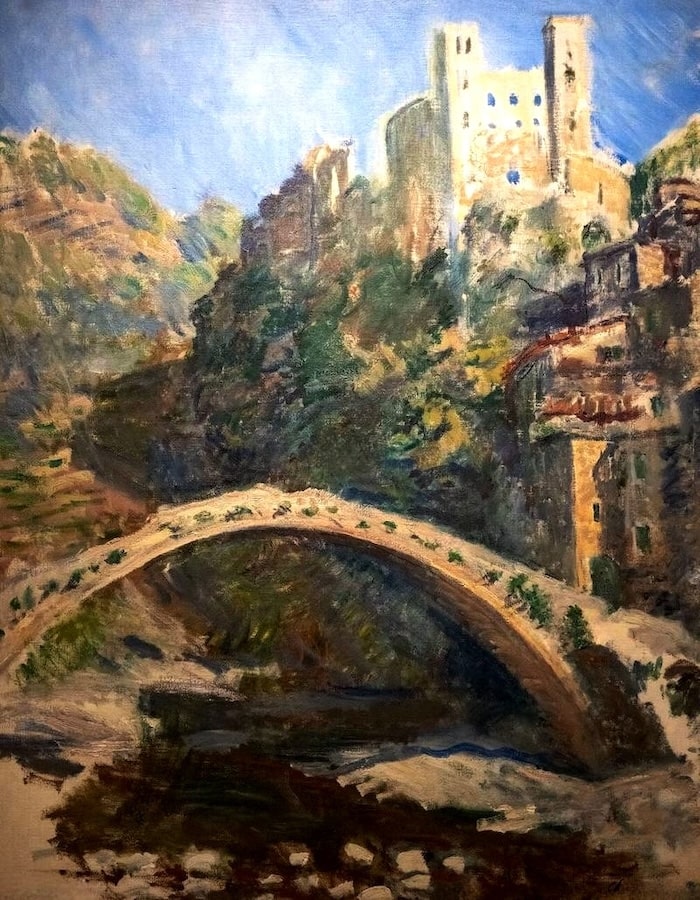
Painted in 1884, this winter scene of the chateau has a symmetry to it that makes it aesthetically pleasing. The curve of the bridge which cuts horizontally across the painting is counterbalanced by the curve of the river bed, which moves from front to back of the painting.
The buildings on the right of the valley are a sign of human life, but the opposite side of the river is free to nature. The green of the left bank has encroached on the right and is creeping up the sides of the chateau. This suggests that, rather than man dominating nature, nature is claiming back the land. This theme occurs increasingly in the artist's later work. Monet's preoccupation with the power of nature is particularly evident in the paintings he did during this period, perfectly capturing the barrenness of the wild landscape.
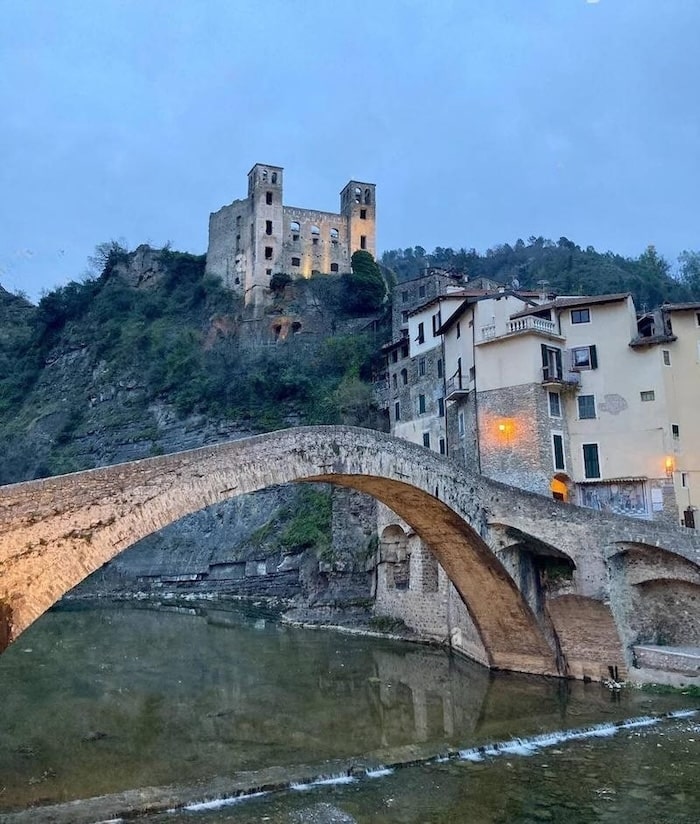
In The Chateau de Dolceacqua Monet suggests that, in a few years, nature will have completely reclaimed the land. The comparison is furthered by the sweep of the river bed in both pictures, forming the central dissection of the canvas.

